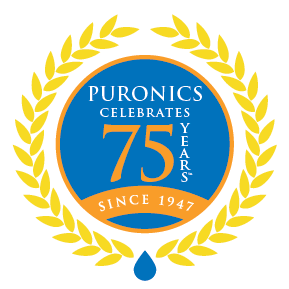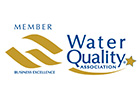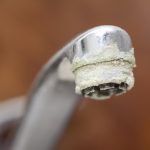Last Updated on September 27, 2022
Consider this scenario: you move into a new home. You go to wash your hands or shampoo your hair for the first time, and the soap doesn’t want to lather. Or you wash the dishes, and they wind up covered with water spots. Over time you notice your skin is dryer than usual, and your hair is too. After a few months, those spotty dishes keep piling up and the shower walls are covered in soap scum.
The culprit might not be the soap: it could be the water.
In fact, 85% of homes in the United States suffer from hard water, according to a 2019 study done by the U.S. Geological Survey. And while soap that doesn’t later and spotty dishes are sometimes the first signs of hard water issues – left untreated hard water can cause other, bigger issues: limescale buildup in pipes, appliances that wear out easily and plumbing fixtures with aerators that seem to clog constantly.
That’s where water softeners come in. These small two-piece units connect directly to a home’s main water supply. The softener uses a natural process to remove the causes of hard water: mineral content, consisting of calcium, magnesium and other metallic elements.
How do water softeners work?
At the most basic level, water softeners remove the stuff that you don’t want in your water: naturally occurring minerals that are safe to drink but hard on your skin, hair, dishes and laundry. Unfortunately, water picks up these minerals as it flows through the ground, and water treatment plants don’t fully remove them since they aren’t harmful to consume.
From a technical standpoint, a water softener is an appliance that helps all your other appliances run more efficiently. It is composed of two parts: a mineral tank and a backflush tank. The mineral tank collects hardness minerals and flushes them away to drain. Ion exchangers (usually resin beads) are used for water softening. When water runs through the resin, it exchanges the calcium and magnesium ions in the water with other ions such as sodium or potassium while still maintaining an efficient flow rate. The result is water that feels smoother – almost silkier – to the touch. You can also use less soap when bathing and laundering.
If it sounds complicated – the magic happens behind the scenes in the unit. As a homeowner, there’s virtually no maintenance required. The most frequent form of maintenance your system will require is a refill on the water softener salt.
Will the water taste salty?
Water from a properly installed water softener does not taste salty. That’s because salt isn’t used to soften the water; instead, it’s used to regenerate the ions in the tank. While the water will contain nominal amounts of sodium, it’s not much. In an 8-ounce glass of softened water, the sodium content is around 78.7 mg – about the amount found in a large stalk of celery. If you are concerned about the additional sodium, you can install a reverse osmosis system under your kitchen sink. This will remove the sodium along with many other contaminants. If you’re concerned about the salt for other reasons, you can use potassium chloride as an alternative. Salt-free water softeners do not exist.
How do I pick the softener that’s right for my needs?
The best water softener is one that delivers not only softer water but other water conditioning benefits. Can it filter water as well? These systems ensure great tasting, soft water that is better for your home, hair and skin.
Additionally, consider these questions when looking for a water softener:
- What type of filtration media does it use? Both Chlorostatic and Bacteriostatic are considered the best available. Puronics® whole-house bacteriostatic water softener systems incorporate SilverShield® Protection, which is based on NASA technology, to inhibit bacteria growth within the filter media bed. Chloramine is a common municipal water disinfectant, but it is corrosive to lead and copper water lines and could have side effects for people and fish. Puronics® whole-house Chlorostatic® water softener systems with Chloroshield™ Clearess® filter media, are specifically designed to reduce the levels of chloramine, chlorine and hardness typically found in municipal water supplies while reducing the need for filter changes.
- What certifications does it have? Certified products are rigorously tested by independent, third parties to ensure that no harmful substances leach into your home’s water from the system. When you’re looking for a water softener, look for certifications developed and defined by National Sanitation Foundation (NSF) and the American National Standards Institute (ANSI). Be mindful that the whole unit is certified – not just the components.
- Where is it manufactured? Is it important to you to have a unit that’s made and manufactured in the United States?
Water softeners can quickly become one of your favorite appliances in your home. Working behind-the-scenes they make everything you do with water better. Softer skin, cleaner clothes and dishes, and less soap scum build up on your shower walls. Over time, they help keep your water-loving appliances healthier as well. Ready to learn more? Puronics is here to help. For softener system questions, feel free to contact us or your local Authorized Dealer.

 Puronics, Incorporated
Puronics, Incorporated


